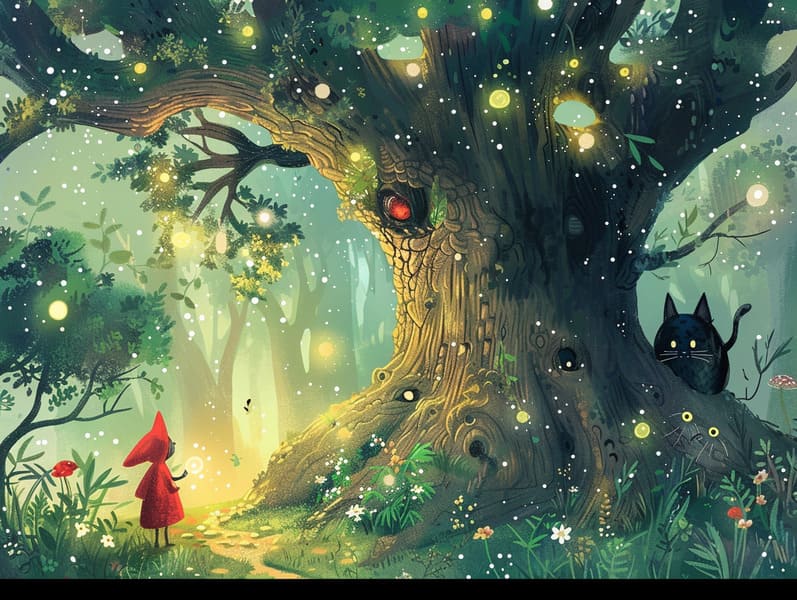A Brief History of Mythical Fairy Tales with Their Consistent Fascination.
A Brief History of Mythical Fairy Tales with Their Consistent Fascination.
Blog Article

Fairy tales have old origins. These tales have been shared from one generation to the next long before they were ever documented. They emerged from a variety of societies, including European traditions. They were initially transmitted among older generations, often carrying themes and messages reflective of the societal norms and beliefs of the time.
Jacob and Wilhelm Grimm, Jacob and Wilhelm (the Grimm brothers), were among the first to gather many of these beloved narratives. Their collection, "Grimm's Children's Stories," included narratives like "The True Bride," "The Bread Crumb Trail," and "Little Snow White," which have since become mainstays in the world of iconic fairy tales. Similarly, Hans Christian Andersen's magical narratives, such as "The Story of the Little Mermaid," and "The Duckling's Story," have won hearts worldwide, establishing their place in the pantheon of iconic fairy tales.
Though they are old, these stories remain as impactful as ever, especially as nighttime stories for kids. These enchanting tales are now available in different formats, including vividly illustrated books, whimsical animations, and digital fairy tales.
Their persistent charm can be linked to several whimsical characteristics:
Life Lessons: Timeless fairy tales often teach important moral lessons. Fairy tales like "The Shepherd Boy and the Wolf" teach the benefit of being truthful, while "The Tale of the Tortoise and the Hare" highlight the traits of perseverance and unpretentiousness. These narratives offer children clear distinctions between good and bad, forming their moral compass in a kind yet profound way.
Compassion and Knowledge: Ancient fairy tales frequently present protagonists facing problems and hurdles, prompting children to understand with their struggles and cheer for their triumphs. For instance, "Beauty and Her Beast" highlights the importance of valuing inner qualities to realize the true character of a soul, encouraging empathy and recognition.
Cultural Recognition: Many classic fairy tales are imbued with the cultural contexts from which they emerged. Discovering these tales can provide informative snapshots into different historical contexts, strengthening a sense of global insight and appreciation.
Inventiveness and Fantasy: The fantastical elements in classic fairy tales—enchanted objects—boost children’s inventiveness. These tales take readers to magical realms, firing up imaginative thinking and a sense of amazement that stays a lifetime.
Traditional fairy tales are not only delightful but also teaching. They act as spellbinding tools in fostering various mental and emotional abilities in young readers. When traditional fairy tales are spoken, they cultivate linguistic abilities by offering new lexicon and intricate sentence structures. This practice also cultivates hearing perception and attentiveness, as little ones keep up with the story, prepared to see what happens next.
Furthermore, talking about the themes and characters of ancient fairy tales can strengthen cognitive skills and reasoning skills. Young ones are educated to identify patterns, expect results, and get cause and effect. These conversations also further the young express their thoughts and feelings, cultivating their emotional intelligence.
In today’s modern era, the proliferation of online fairy tales has made these narratives more attainable than ever. Internet resources and digital apps make available wide arrays of classic fairy tales that can be looked at or heard anytime, anywhere. Fairy tales read aloud are particularly well-liked, making available an fascinating method for little ones to savor these magical stories. Narrated books and read-to-me videos guide characters and settings to life, often enhanced by charming harmonies and music that augment the tale experience.
The enduring charm of ancient fairy tales lies in their ability to transform to current eras while sustaining their fundamental ideas. Contemporary retellings of these stories often showcase more multicultural protagonists and modern settings, making them relatable to today’s audience. However, the main ideas of courage, generosity, and equity remain unchanged, continuing to connect with kids of all ages.
Classic fairy tales also offer a sense of reassurance and recognition. They make available a neat narrative with a transparent beginning, middle, and end, often closing with the culmination of conflicts and the triumph of morality over wickedness. This foreseeability can be relieving for young readers, offering a sense of sturdiness in an ever-changing here world.
Classic fairy tales continue to bewitch and guide new generations, maintaining their splendor and impact in modern society. As nighttime stories for kids, they extend a perfect blend of charm and enlightenment, developing moral values, empathy, and creativity. The accessibility of digital storybooks and the well-received status of fairy tales told out loud ratify that these classic tales remain available to new generations.
By upholding and imparting these fairy tales, we continue to commemorate the rich tapestry of narrative artistry and cultural heritage. Whether you are discovering a artistically illustrated book, browsing a electronic library, or listening via an audiobook, the radiance of classic fairy tales is always within reach. These narratives demonstrate of the unchanging nature of fairy tales and its ability to hold us together across time and space.
Even if you are viewing a artistically illustrated book, enjoying a electronic library, or listening to an audiobook, the beauty of famous fairy tales is always within reach.
These narratives illustrate of the endless spell of stories and its ability to draw us together across eras and regions, establishing a link that enchants and educates alike.